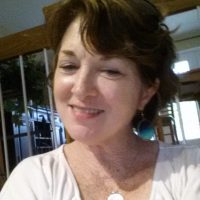View this post on Instagram
Relephant read: Elephant’s Continually updated Coronavirus Diary. ~ Waylon
~
It occurs to me that the yoga lessons I have been studying for a decade offer some clarity during this pandemic.
Yoga teaches us not to identify with material things, which can sound quite abstract when things feel normal. We take our health, prosperity, our freedom of movements for granted.
Maybe we’ve worked hard, always planning to play later. Eventually, we say to ourselves, we will get to all the stuff that we never get to.
And then “normal” stopped abruptly. An organism invisible to the eye and novel to the planet threatened to bring down civilization.
From the simple identification we make with our physical selves—our ability to work, our ability to move in the world—to our ability to be close to other people, these mandatory controls on where we can go and when, or how we can work and share meals together cause us inconvenience and discomfort.
In the absence of the rituals of daily life, we feel uprooted. Our rituals and the things to which we have grown attached have become sources of suffering.
We can see this clinging in the hyperbole that is is everywhere: People partake in divisive discussions about how serious this could be as camps choose their own sources of contradictory information. People hoard necessities like hand sanitizers, or pallets of toilet paper and canned goods.
Yet at the same time, so many people continue to work the soup kitchens, shop for the elderly, and walk in the streets greeting each other with a mindful distance. We check in and try to be neighbors, facing fears, but also talking about the beauty of the flower petals popping up along sidewalks, or dropping from trees and onto the streets and cars. We smile and seem sincere when we ask how the other is doing.
This pandemic has provided clarity—awareness.
It has shown us all that we cling to—all that we have identified with against the teachings of yoga.
Clarity reveals the limited resources of which someone may need more than we do. At the same time, clarity also reveals the apparent abundance of those same resources in the hands of those who do not need them.
Clarity may distill to finding the value in workplace relationships, and our ability to face a challenge as a creativity community. But clarity also means acknowledging the presence of the pack-your-bags-and-take-care-of-your-own mentality so shamefully shown by elected officials selling off stocks at the first slip of the economy.
Clarity shows both who is seeing patients face-to-face, and who is providing virtual visits from their home computer—who is here (really here) and who is not.
I have a window in my office that I enjoy in every season. It has been open all week letting in fresh air while the Bartlett pear trees bloom, their delicate perfume attracting bees. The bees do their thing, getting pollen on their tiny feet to keep the earth going, not noticing too much as we cut down trees all around to make more space for administrative offices.
The bees and natural world do not know what COVID-19 or a pandemic is. The bees and natural world do not know what we mean by practicing yoga. They move guided by instinct, doing as they have always done to survive. If one perishes, more will follow.
I find myself thinking of people stuffed in office chairs administering. What are they administrating and why are there so many of these people? They often become our patients: bodies that are thick in the middle, with elevated blood pressure, cholesterol, diabetic markers, liver enzymes. They don’t need to explain their lifestyles to me, I see it in their body shape and lab values.
They work long hours in meetings, getting very little accomplished, and have a nice home and family with decent health insurance. The choices they have made for security have paid them back with lifestyle-induced health conditions that now require expensive medications.
They tell me they have no time to eat well or exercise. They are expected to be on call past 5 p.m., they say, and as clearly as I can, I teach them that sitting is the new smoking. That based on their 10 year cardiac risk, the blood pressure medicine, statins, and aspirin will only do so much; their risk remains elevated.
I do my part with evidence-based guidelines. I gently ask what they are willing to do. I read these markers of living poorly: eating fast food and drinking sugary beverages, working too long and feeling pressure from corporate managers. The equation is a recipe for heart disease. It is not if but when, I say.
Yoga shows up, too, in this scenario, reminding us that we are mistaken in believing that time is endless—that we will have time to get in shape, eat better, enjoy our loved ones.
It circles back to the clarity in yoga philosophy. Clarity that we attach to the fruits of labor. We participate in a for-profit model of healthcare that leaves out the soul. We believe that our species can crush any germ that dares to challenge our dominance. Clarity is seeing that we believe we can take more than we ever needed without considering that this means someone else has less.
Clarity means seeing that we fail to see ourselves in others.
The unexamined life breaks my heart in so many ways, as I teach my patients mindful breathing, simple yoga poses, and hope that whatever path they find brings them back to community, shared values, and soul.
Can we use this pandemic as a way to learn to see again, with our heart this time and not our eyes?











Read 0 comments and reply